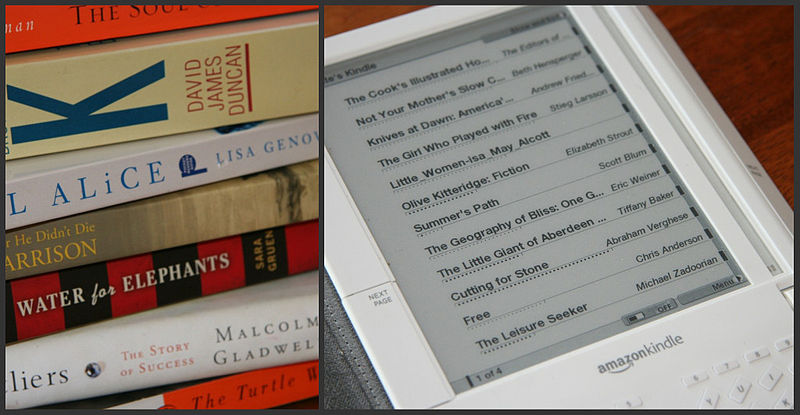
FAA Should Re-Evaluate In-Flight Restrictions on E-Book Readers

The restriction on e-book readers is certainly not the first airline regulation to be chided as obsolete. The Transportation Security Administration (TSA) is known (and often criticized) for many arcane restrictions and policies created in the name of security. For example, British Airways chairman Martin Broughton recently denounced the security screening requirements that passengers remove their shoes and laptops for individual inspection calling the measures “completely redundant.” And passengers have been justifiably confused about which electronic devices require must be removed from their carrying cases for separate screening. (And in case you are wondering, the answer is “it depends.”)
The current restriction on e-book readers is yet another example of an outmoded regulation that likely does little to benefit travel safety but imposes a cost on travelers. The current restrictions on portable electronic devices were first introduced in 1977 with the assumption that electronic devices may interfere with aircraft operations. The FAA regulations were revised in 1993, again in October 2000, and most recently in August 2006. The RTCA, a non-profit advisory group to the FAA, has issued guidance on the topic over the past few decades but has generally reported little hard evidence that the average electronic device presents a serious threat to aircraft safety. Similarly, the House Subcommittee on Aviation held a hearing on the issue in July 2000 and while it heard some anecdotal evidence of potential interference from electronic devices, witnesses brought forth no “sustainable, widely accepted scientific proof” about the interference from these devices one way or the other.
The restrictions on the use of portable electronic devices on board aircraft have been clouded by ambiguity and uncertainty for well over a quarter century. As early as 1983, the magazine InfoWorld featured an article asking “Are portable computers a menace to our nation’s airways?” and highlighting the conflicting regulations and policies of various airlines. Even today, the FAA’s current regulations leaves the final determination for whether a device is approved to be used onboard a flight to the operator of the aircraft. The only portable electronic devices specifically approved by the FAA for in-flight use are portable voice recorders, hearing aids, heart pacemakers and electric shavers.
An argument could be made that passengers are distracted by electronic devices and thus they should be banned during while flight attendants are relaying flight safety instructions. However, this argument applies to analog distractions as well as digital ones. As long as passengers can look at paper books, newspapers, magazines and printed reports, passengers should be allowed to access the digital equivalent.
In theory, this limitation on portable electronic devices is fairly minimal. On an ideal flight, this would only be about 15 minutes or so at the beginning and end of a flight. But this time adds up quickly and for short flights can easily total a third or half of the entire flight. And as most travelers know flight delays are now par for the course. I for one do not rely on an e-book reader while traveling for this reason. After spending close to an hour on the runway on a recent flight from Atlanta to Washington, DC, I was thankful to have brought my paper version of The Economist rather than having to stare at the blank screen of a powered-off Kindle.
Is this a big deal? Of course not. But refining this policy could help boost a growing market and benefit many consumers. E-book readers like the Kindle and Nook are now entering the mainstream. Last Christmas, Amazon reported that it sold more e-books than paper books. And government regulations, even those from TSA, do have an impact on the marketplace. In the past, new regulations from TSA has prompted industry to respond with whole new lines of products that consumers embrace from shoes without metal shanks to three ounce plastic bottles to TSA-approved luggage locks.
Passenger safety must be paramount, but policymakers should also make sure that regulations such as these are justified. Over 25 years of uncertainty suggests that it is time for clearer standards and more scientific investigation to determine acceptable levels of electromagnetic emissions for portable electronic devices on aircraft and the impact of these devices on aircraft navigation and communication systems. Once an acceptable level of emissions is found, the FAA should encourage a voluntary certification for electronic device manufacturers so that passengers can use these approved devices. And rather than leaving it to individual airlines to investigate each device on their own, FAA should set some clear standards about what types of electronic devices are safe to operate during critical phases of the flight such as takeoff and landing, as well as those only safe to operate at cruising altitudes.
Editors’ Recommendations
February 2, 2015
How and When Regulators Should Intervene
January 8, 2015
Stop Hamstringing Online Innovators
January 5, 2015

